I thought I would try to do some research and a bit of a write up on one of my Omega watches with the rather grand title on its box of "The Artistic Interpretation of Time".

 " />
" />
The story starts in 1986 when Omega began a project looking to make use of the relatively ignored space on the caseback of watches.
A minimalist case was designed by Hans Zaugg and with a simplified dial the caseback was used to show exclusive and limited art work from a number of contemporary artists.
They included Max Bill, Paul Talman, Kenneth Noland, Camille Graesar, Fritz Glarner, Richard Paul Lohse, Al Hold, Arnaldo Pomodoro and Emilio Tadini.
The type of art work used was called "concrete art" which is generally defined as "free of any basis in observed reality & has no symbolic meaning".
The watches were limited to editions of 999 for each artist and were produced in three sizes, 40mm, 32mm and 22mm. The cases were made in both white & black, scratch resistant ceramic or gold.
My one is 32mm in black ceramic

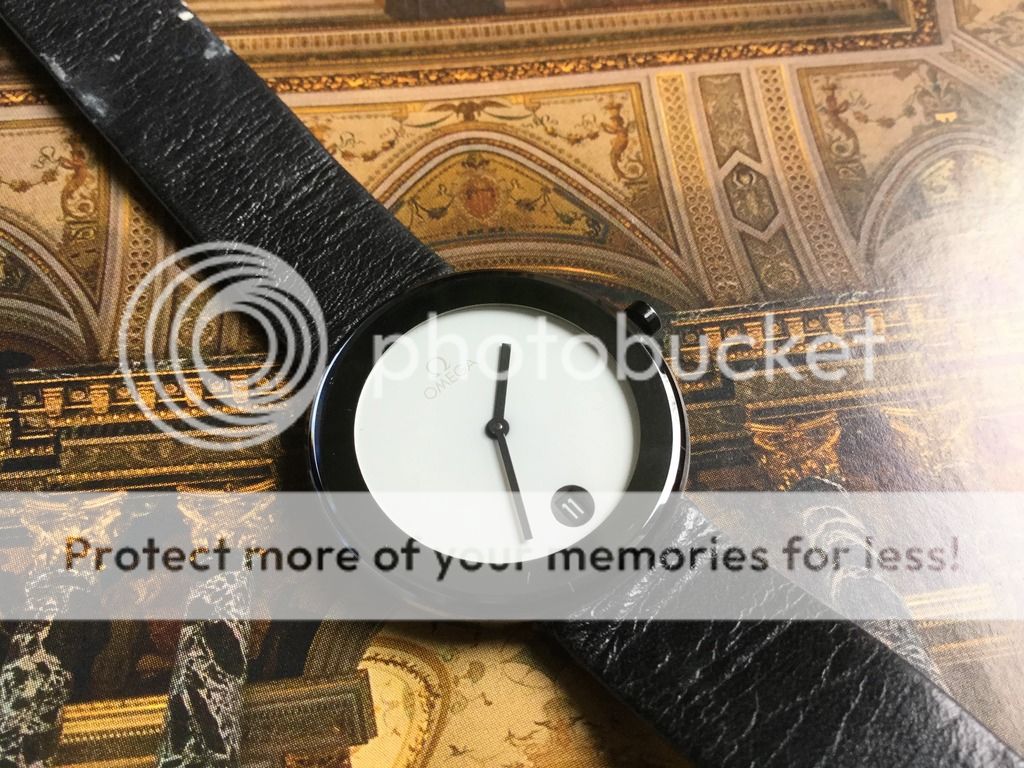 " />
" />
as you can see it is very minimalist in design with even the Omega name having no prominence on the dial.
This is in stark contrast to the detail on the case back.

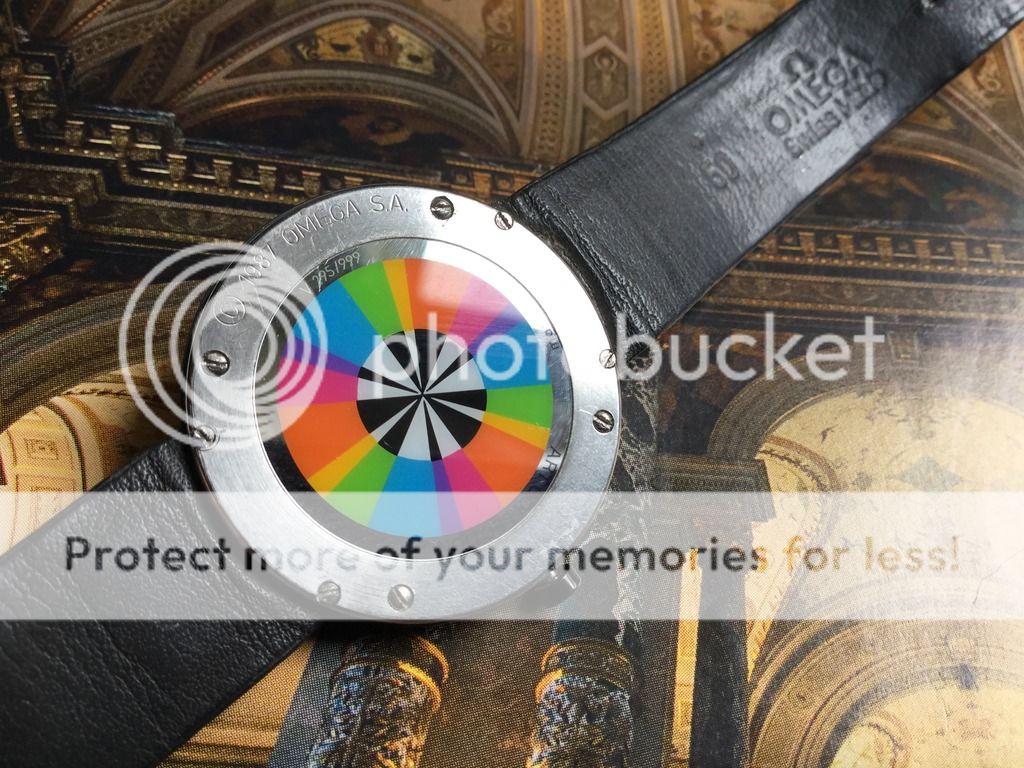 [/img
[/img

 " />
" />
The art work on my one is by Max Bill who is also well known for the designs he created for Junghans for both clocks and watches. The first clock released was a wall clock in 1956 followed a few years later by a series of watches.
Junghans has re-released the "Max Bill Line" and this is one example......

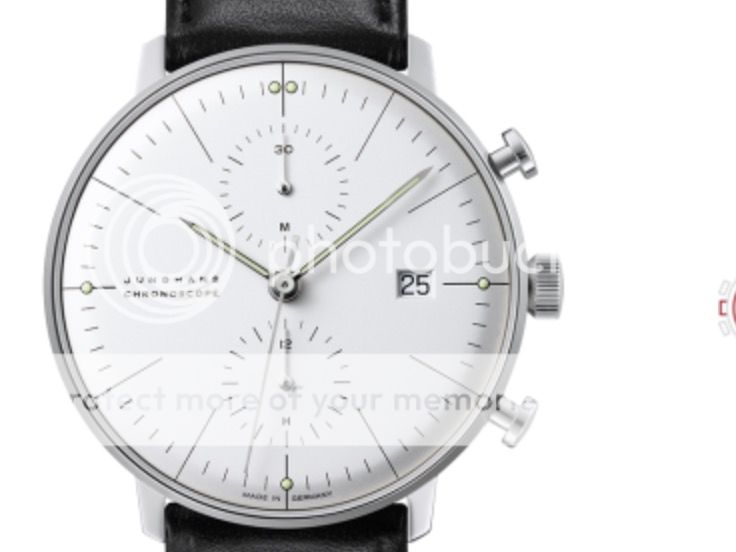 " />
" />
Here is a link to their web site for more examples and background.
https://www.junghans.de/en/junghans-collection/watches/maxbill/detail.html
Going back to the Omega the series produced became Omega's "Art Collection" of watches which was launched in 1987 and used the Omega calibre 1436 Quartz movement.
Here are a couple more examples of the art work that I managed to find.
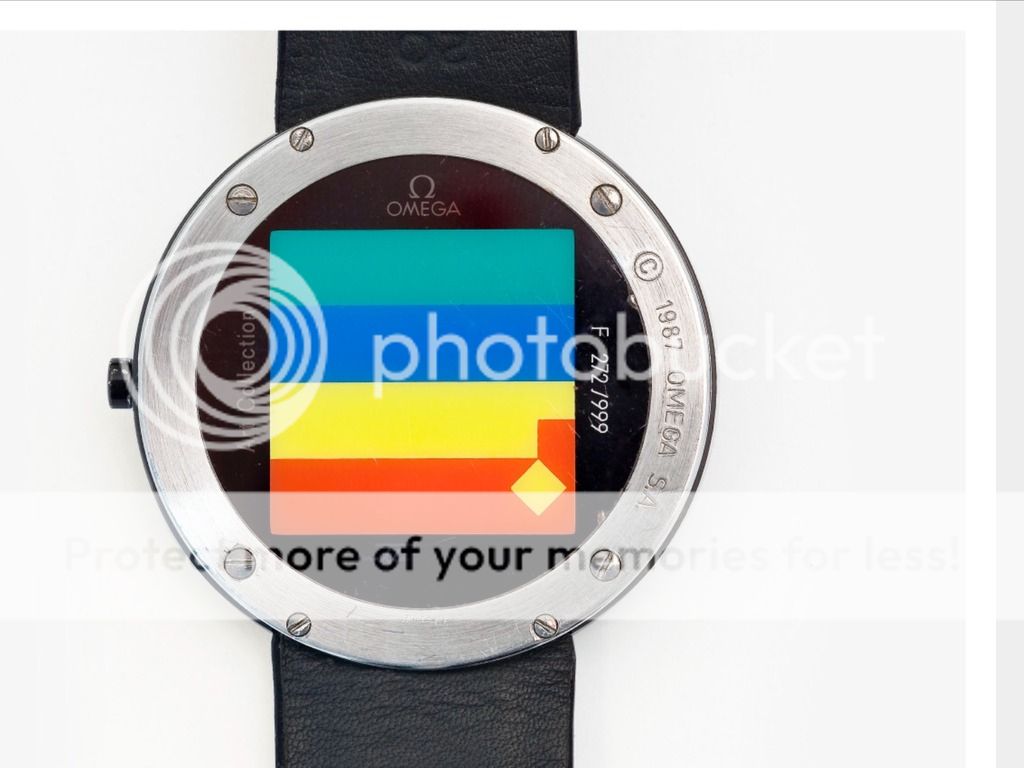

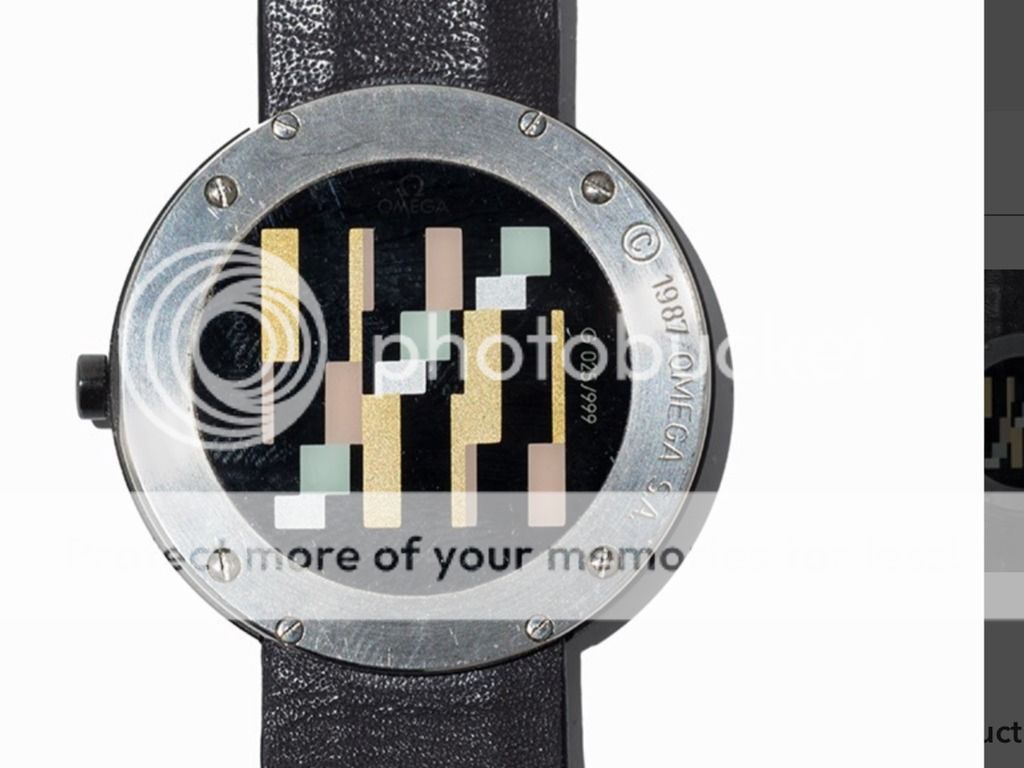 " />
" />
While watch cases over the years could be engraved or enamelled it was an innovative concept to use exclusive art works.
The watch itself is very comfortable to wear with the contrast of the black hands on the white dial making it very easy on the eye to tell the time. Unusually for my eyesight I can also tell the date at a glance. The black framed date window at the six o'clock position doesn't, to me, spoil the minimalist design of the watch.
I am though careful of the original strap which is attached to the case by two screws on each side. I would prefer to avoid having to try and source and fit a new one.
I hope this has been of some interest and must give full credit to "Google" for the various pieces of information.
 " />
" />The story starts in 1986 when Omega began a project looking to make use of the relatively ignored space on the caseback of watches.
A minimalist case was designed by Hans Zaugg and with a simplified dial the caseback was used to show exclusive and limited art work from a number of contemporary artists.
They included Max Bill, Paul Talman, Kenneth Noland, Camille Graesar, Fritz Glarner, Richard Paul Lohse, Al Hold, Arnaldo Pomodoro and Emilio Tadini.
The type of art work used was called "concrete art" which is generally defined as "free of any basis in observed reality & has no symbolic meaning".
The watches were limited to editions of 999 for each artist and were produced in three sizes, 40mm, 32mm and 22mm. The cases were made in both white & black, scratch resistant ceramic or gold.
My one is 32mm in black ceramic
 " />
" />as you can see it is very minimalist in design with even the Omega name having no prominence on the dial.
This is in stark contrast to the detail on the case back.
 [/img
[/img " />
" />The art work on my one is by Max Bill who is also well known for the designs he created for Junghans for both clocks and watches. The first clock released was a wall clock in 1956 followed a few years later by a series of watches.
Junghans has re-released the "Max Bill Line" and this is one example......
 " />
" />Here is a link to their web site for more examples and background.
https://www.junghans.de/en/junghans-collection/watches/maxbill/detail.html
Going back to the Omega the series produced became Omega's "Art Collection" of watches which was launched in 1987 and used the Omega calibre 1436 Quartz movement.
Here are a couple more examples of the art work that I managed to find.

 " />
" />While watch cases over the years could be engraved or enamelled it was an innovative concept to use exclusive art works.
The watch itself is very comfortable to wear with the contrast of the black hands on the white dial making it very easy on the eye to tell the time. Unusually for my eyesight I can also tell the date at a glance. The black framed date window at the six o'clock position doesn't, to me, spoil the minimalist design of the watch.
I am though careful of the original strap which is attached to the case by two screws on each side. I would prefer to avoid having to try and source and fit a new one.
I hope this has been of some interest and must give full credit to "Google" for the various pieces of information.










» sub £50 screwdriver set
» Anyone bought anything during lockdown
» How is everybody
» 2020 future watch collection
» 31st December 2019
» Happy new year too you all
» Merry Christmas
» 13th November 2019